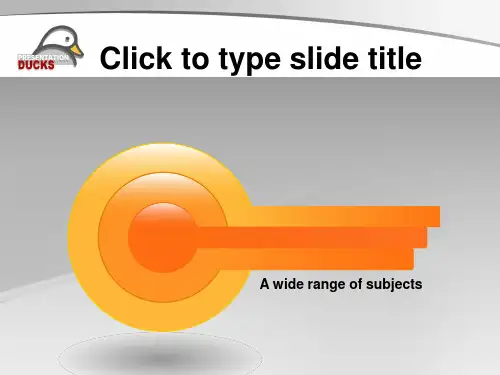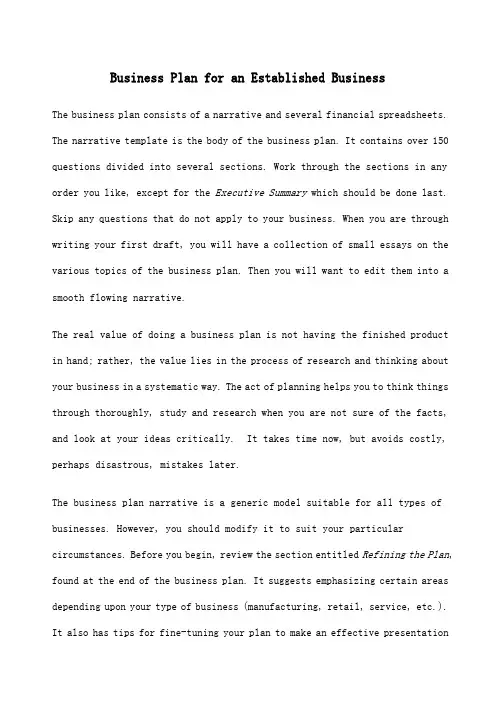excel精美国外模板-文档保护破解-BusinessPlanner-Demo
欧美多彩商务数据图表大全 (7)

1.234K Female Users
点击输入标题内容
Service 20%
Service 60%
Service 20%
Data Analysis
点击输入文本内容点击输入文本内容 点击输入文本内容点击输入文本内容 点击输入文本内容点击输入文本内容
12
Conceptualization 点击输入文本内容点击输入文本内容点击输 入文本内容点击输入文本内容点击输入文本 内容点击输入文本内容 点击输入文本内容点击输入文本内容点击输 入文本内容点击输入文本内容点击输入文本 内容点击输入文本内容
56% In 2012Lorem ipsum Fra bibliotekolor sit
amet, consectetur Lorem ipsum dolor
adipiscing elit
sit amet,
sed do eiusmod
consectetur
adipiscing elit
sed do eiusmod
点击输入文本内容点击 输入文本内容点击输入 文本内容
点击输入标题内容 20%
15%
14 15%
8%
10%
75.500M
点击输入文本内容点击输入 文本内容点击输入文本内容 点击输入文本内容点击输入 文本内容点击输入文本内容
85.420M
点击输入文本内容点击输入 文本内容点击输入文本内容 点击输入文本内容点击输入 文本内容点击输入文本内容
20%
98.130M
10
Galaxy 点击输入文本内容点击输入文本内容 点击输入文本内容点击输入文本内容 点击输入文本内容点击输入文本内容
英文版商务通用图表模版

Add text in here add text in here add text Add text in here add text in here
CLICK TO TYPE SLIDE TITLE
Add text
Add text
Add text
Add text
Add text here Add text in here too Add text in here
Click To Edit Title Style
Click to add your text
Text
Text
Click to add your text
Click to add your text
Add text in here too Add text in here
Add text in here add text in here add text in here Add text in here add text in here add text in here Add text in here add text in here add text in here Add text in here add text in here add text in here Add text in here add text in here add text in here Add text in here
Add text here Add text in here too Add text in here
add text in here add text in here add text in here add text in here add text in here add text in here add text in here
欧美精美亮丽简约多线条动态商业计划书ppt模板

80 20
在这里输入标题
2019
在这里输入内容……
2020
在这里输入内容……
在这里输入标题
输入标题
在这里输入内容…… 在这里输入内容…… 在这里输入内容…… 在这里输入内容……
输入标题
在这里输入内容…… 在这里输入内容……
在这里输入内容…… 在这里输入内容……
在这里输入标题
输入标题
在这里输入内容…… 在这里输入内容…… 在这里输入内容……
在这里输入内 容……
在这里输入内 容……
在这里输入内 容……
输入标题
在这里输入标题
输入标题
在这里输入内容……
输入标题
在这里输入内容……
输入标题
在这里输入内容……
输入标题
输入标题
在这里输入内容……
输入标题
在这里输入内容……
输入标题
在这里输入内容……
在这里输入标题
输入标题
在这里输入内容……
输入标题
在这里输入内容……
在这里输入标题
100%
75%
50%
25%
0%
标题 标题
在这里输入内容……
标题
标题
在这里输入内容……
输入标题
在这里输入内容……在这里输入内容…… 在这里输入内容……在这里输入内容……
在这里输入内容…… 在这里输入内容…… 在这里输入内容……
标题
在这里输入内容……
标题
在这里输入内容……
在这里输入标题
输入标题
在这里输入内容……在这里输入内容…… 在这里输入内容……在这里输入内容……
在这里输入标题
输入标题
在这里输入内容……在这里输入内容…… 在这里输入内容……在这里输入内容……
欧美商务高端模板系列通用PPT模板课件

Amet adipiscing elit, sed diam nonummy nibh euismod tincidunt ut laoreet dolore magna
ADD YOUR TEXT
Amet adipiscing elit, sed diam nonummy nibh euismod tincidunt ut laoreet dolore magna
ADD YOUR TEXT
nonummy nibh euismod tincidunt ut laoreet dolore
magna aliquam erat
ADD YOUR TEXT
nonummy nibh euismod tincidunt ut laoreet dolore
magna aliquam erat
ADD YOUR TEXT
Amet adipiscing elit, sed diam nonummy nibh euismod tincidunt ut laoreet dolore magna aliquam erat
模板大全 POWERPOINT DESIGN
DIAM NONUMMY NIBH EUISMOD TINCIDUNT LAOREET
模板大全 POWERPOINT NIBH EUISMOD TINCIDUNT LAOREET
Amet adipiscing elit, sed diam nonummy nibh euismod tincidunt ut laoreet dolore magna aliquam erat volutpat wisi enim ad minim veniam, quis nostrud exercia liquam elit, tincidunt ut laoreet dolore magna aliquam erat volutpat wisi enim ad minim veniam
BUSINESSPLANFORANESBLISHEDBUSINESS表格格式

Business Plan for an Established BusinessThe business plan consists of a narrative and several financial spreadsheets. The narrative template is the body of the business plan. It contains over 150 questions divided into several sections. Work through the sections in any order you like, except for the Executive Summary which should be done last. Skip any questions that do not apply to your business. When you are through writing your first draft, you will have a collection of small essays on the various topics of the business plan. Then you will want to edit them into a smooth flowing narrative.The real value of doing a business plan is not having the finished product in hand; rather, the value lies in the process of research and thinking about your business in a systematic way. The act of planning helps you to think things through thoroughly, study and research when you are not sure of the facts, and look at your ideas critically. It takes time now, but avoids costly, perhaps disastrous, mistakes later.The business plan narrative is a generic model suitable for all types of businesses. However, you should modify it to suit your particular circumstances. Before you begin, review the section entitled Refining the Plan, found at the end of the business plan. It suggests emphasizing certain areas depending upon your type of business (manufacturing, retail, service, etc.). It also has tips for fine-tuning your plan to make an effective presentationto investors or bankers. If this is why you are writing your plan, then pay particular attention to your writing style. You will be judged by the quality and appearance of your work as well as your ideas. For your guidance, we have included a document called Writing Guide. This is an example of an executive summary written in a clear and concise style suitable for this type of document.It typically takes several weeks to complete a good plan. Most of that time is spent in research and re-thinking your ideas and assumptions. But then, that is the value of the process. So make time to do the job properly. Those who do, never regret the effort. And finally, be sure to keep detailed notes on your sources of information and the assumptions underlying your financial data.Business PlanOWNERSBusiness name: Example Corporation Address: Address Line 1Address Line 2City, ST 22222Telephone: 222-333-4444Fax:EmailI.Table of contentsII.Executive summaryWrite this section last!We suggest you make it 2 pages or less.Include everything that you would cover in a 5-minute interview.Explain the fundamentals of the business: what is your product, who are your customers, who are the owners, what do you think the future holds for your business and your industryMake it enthusiastic, professional, complete and concise.If applying for a loan, state clearly how much you want, precisely how you are going to use it, and how the money will make your business more profitable, thereby ensuring repayment.III.General Company DescriptionMission Statement: Many companies have a brief mission statement, usually in thirty words or less, explaining their reason for being and their guiding principles. If you have a mission statement, this is a good place to put it in the plan. Followed by: company goals and objectives, business philosophy. What business are you in What do you doTo whom do you market your products Target market (Briefly here - you will do a more thorough explanation in the Marketing section).Describe your industry. Is it a growth industry What changes do you foresee in your industry, and how is your company poised to take advantage of them Now give a detailed description of the business:Form of ownership: Sole Proprietor, Partnership, Corporation, Limited Liability Corporation (LLC)Company HistoryYears in business, previous owners, successes, failures, lessons learned, reputation in community, sales and profit history, number of employees, and events which affected your company’s success. Discuss significant past problems and how you solved and survived them.Most important company strengths and core competencies:What factors will make the company succeed What are your major competitive strengthsSignificant challenges the company faces now and in the foreseeable future. If you are asking for funding, go on to explain how the new capital will help you successfully meet these challenges.What strengths do you personally bring to the businessWhat are your plans for the future of the business Growth If so, at what rate and how will you achieve itLong term:Are you developing strategies for continued growth, increased production, diversification, or eventual sale of business What are your time frames for thisIV.Products and servicesDescribe in depth your products and/or services (technical specifications, drawings, photos, sales brochures, and other bulky items belong in the Appendix).What factors give you competitive advantages or disadvantages For example, level of quality or unique or proprietary features.What are the pricing, fee or leasing structures of your products and/or servicesV.Marketing planNotes on preparation:Market research: WhyYou spend so much time on marketing related matters -- customers, competitors, pricing, promotion and advertising -- that it is natural to assume you have little to learn. However, every small business can benefit from doing market research to make sure they are on track. Use the business planning process as your opportunity to uncover data and question your marketing efforts. It will be time well spent.Market research - HowThere are 2 kinds of market research: primary and secondary.Secondary research means using published information such as industry profiles, trade journals, newspapers, magazines, census data, and demographic profiles. This type of information is available in public libraries, industry associations, chambers of commerce, vendors who sell to your industry, government agencies (Commerce Dept. and state and local development agencies), and the SBA Business Information Centers and One Stop Capital Shops.Start with your local library. Most librarians are pleased to guide you through their business data collection. You will be amazed at what is there.There are more online sources than you could possibly use. A good way to start is at the SBA site, Click the ‘Outside Resources’ button for a great collection of resource links. Your Chamber of Commerce has good information on the local area. Trade associations and trade publications often have excellent industry specific data.Primary market research means gathering your own data. For example, you could do your own traffic count at a proposed location, use the yellow pages to identify competitors, and do surveys or focus group interviews to learn about consumer preferences. Professional market research can be very costly, but there are many books out that show small business owners how to do effective research by themselves.In your marketing plan, be as specific as possible; give statistics & numbers and sources. The marketing plan will be the basis, later on, of theall-important sales projection.The Marketing Plan:EconomicsFacts about your industry:What is the total size of your marketDo you know what percent share of the market you have (This is important only if you are a major factor in the market)Current demand in target marketGrowth historyTrends in target market - growth trends, trends in consumer preferences, and trends in product development.Growth potential and opportunity for a business of your sizeWhat barriers to entry keep potential new competitors from flooding into your marketHigh capital costsHigh production costsHigh marketing costsConsumer acceptance/brand recognitionTraining/skillsUnique technology/patentsUnionsShipping costsTariff barriers/quotasHow could the following affect your companyChange in technologyGovernment regulationsChanging economyChange in your industryProductsIn the Products/Services section, you described your products and services as you see them. Now describe them from your customer’s point of view. Features and BenefitsList all your major products or servicesFor each product/service: Describe the most important features. That is, what does the product do What is special about itNow, for each produce/service, describe its benefits. That is, what does the product do for the customerNote the difference between features and benefits, and think about them. For example, a house gives shelter and lasts a long time; those are its features. Its benefits include pride of ownership, financial security, providing for the family, inclusion in a neighborhood. You build features into your product so you can sell the benefits.What after sale services are supplied For example: delivery, warranty, service contracts, support, follow-up, or refund policy.CustomersIdentify your customers, their characteristics, and their geographic locations; ., demographics.The description will be completely different depending on whether you sell to other businesses or directly to consumers. If you sell a consumer product, but sell it through a channel of distributors, wholesalers and retailers, then you must carefully analyze both the end user and the middlemen businesses to whom you sell.You may well have more than one customer group. Identify the most important groups. Then, for each consumer group, construct a demographic profile: AgeGenderLocationIncome levelSocial class/occupationEducationOtherOtherFor business customers, the demographic factors might be:Industry (or portion of an industry)LocationSize of firmQuality/technology/price preferencesOtherOtherCompetitionWhat products and companies compete with youList your major competitors:Names & addressesDo they compete with you in across the board, or just for certain products, certain customers, or in certain locationsCompare your products/services with competition:Use the table called Competitive Analysis below to compare your company with your three most important competitors.In the first column are key competitive factors. Since these vary with each market, you may want to customize the list of factors.In the cell labeled "Me", state how you honestly think you stack up in customers' minds. Then check whether you think this factor is a strength or a weakness for you. Sometimes it is hard to analyze our own weaknesses. Try to be honest. Better yet, get some disinterested strangers to assess you. This can be a real eye-opener.Now analyze each major competitor. In a few words, state how you think they stack up.In the final column, estimate how important each competitive factor is to the customer. 1 = critical; 5 = not very important.Table 1: Competitive AnalysisHaving done the competitive matrix, write a short paragraph stating your competitive advantages and disadvantages.NicheNow that you have systematically analyzed your industry, your product, your customers and the competition, you should have a clear picture or where your company fits into the world.In one short paragraph, define your niche, your unique corner of the market.StrategyNow outline a marketing strategy that is consistent with your niche. PromotionHow do you get the word out to customersAdvertising: what media, why, and how often Has your advertising been effective How can you tellDo you use other methods: trade shows, catalogs, dealer incentives, word of mouth, network of friends or professionalsIf your have identifiable repeat customers, do you have a systematic contact planWhy this mix and not some otherPromotional BudgetHow much will you spend on the items listed aboveShould you consider spending less on some promotional activities and more on othersPricingWhat is your pricing strategy For most small businesses, having the lowest prices is not a good strategy. Usually you will do better to have average prices and compete on quality and service. Does your pricing strategy fit with what was revealed in your competitive analysisCompare your prices with those of your competition. Are they higher, lower, the same WhyHow important is price as a competitive factorWhat are your payment and customer credit policiesLocationYou will describe your physical location in the Operational section of your business plan. Here in the marketing section, analyze your location as it affects your customers.If customers come to your place of business:Is it convenient Parking Interior spaces Not out of the wayIs it consistent with your imageIs it what customers want and expectWhere is the competition located Is it better for you to be near them (like car dealers or fast food restaurants) or distant (like convenience food stores)Distribution ChannelsHow do you sell your products/servicesRetailDirect (mail order, web, catalog)WholesaleYour own sales forceAgentsIndependent repsHas your marketing strategy proven effectiveDo you need to make any changes or additions to current strategiesSales ForecastNow that you have described your products, services, customers, markets, and marketing plans in detail, it is time to attach some numbers to your plan. Use the Twelve-Month Sales Forecast spreadsheet to prepare a month-by-month projection. The forecast should be based upon your historical sales, the marketing strategies that you have just described, upon your market research, and industry data, if available.You may wish to do two forecasts: 1) a "best guess", which is what you really expect, and 2) a "worst case" low estimate that you are confident you can reach no matter what happens.For this section, please refer to the .Remember to keep notes on your research and your assumptions as you build this sales forecast, and all subsequent spreadsheets in the plan. Relate the forecast to your sales history, explaining the major differences between past and projected sales. This is critical if you are going to present it to funding sources.VI.Operational PlanExplain the daily operation of the business, its location, equipment, people, processes, and surrounding environment.ProductionHow and where are your products/services producedExplain your methods of:Production techniques and costsQuality controlCustomer serviceInventory controlProduct developmentLocationDescribe locations of production, sales, storage areas, and buildings.Are premises leased, or ownedDescribe access to buildings (walk in, parking, freeways, airports, railroads, shipping)What are your business hoursInclude a drawing or layout of your proposed facility if you are trying for an expansion loan.Legal EnvironmentDescribe the followingLicensing and bonding requirementsPermitsHealth, workplace or environmental regulationsSpecial regulations covering your industry or professionZoning or building code requirementsInsurance coverageTrademarks, copyrights, or patents (pending, existing, or purchased)PersonnelNumber of employeesType of labor (skilled, unskilled, professional)Where do you find new employeesQuality of existing staffPay structureTraining methods and requirementsNew hiring in the coming yearWho does which tasks Are schedules and procedures in place Do you have written job descriptions for employees If not, take time to write some. Written job descriptions really help internal communications with employees.Do you use contract workers as well as employeesInventoryWhat kind of inventory is kept: raw materials, supplies, finished goods Average value in stock ., what is your inventory investment)Rate of turnover and how this compares to industry averagesSeasonal buildupsLead-time for orderingSuppliersWho are your suppliersNames and addressesType and amount of inventory furnishedCredit and delivery policiesHistory and reliabilityDo you expect shortages or short-term delivery problemsAre supply costs steady or fluctuating If fluctuating, how do you deal with changing costsShould you be searching out new sources of supply, or are you satisfied with present suppliersCredit PoliciesDo you sell on credit If so, do you really need to sell on credit Is it customary in your industry and expected by your clienteleDo you carefully monitor your payables, what you owe to vendors, to take advantage of discounts and to keep your credit rating goodYou need to carefully manage both the credit you extend and the credit you receive.Managing your Accounts ReceivableIf you do extend credit, what are your policies about who gets credit and how muchHow do you check the creditworthiness of new applicantsWhat terms will you offer your customers; ., how much credit and when is payment dueDo you offer prompt payment discounts (It is best to do this only if it is usual and customary in your industry).Do you know what it costs you to extend credit This includes both the cost of capital tied up in Receivables and the cost of bad debts.Have you built the costs into your pricesYou should do an aging at least monthly, to track how much of your money is tied up in credit given to customers, and to alert you to slow payment problems.A receivables aging looks like this:Collecting from delinquent customers is no fun. You need a set policy and you need to follow it.When do you make a phone callWhen send a letterWhen get your attorney to threatenManaging your Accounts PayableYou should also age your Accounts Payable, what you owe to your suppliers. Use this format:This helps you plan who to pay and when. Paying too early depletes your cash, but paying late can cost you valuable discounts and damage your credit. (Hint:if you know you will be late making a payment, call the creditor before the due date. It tends to relax them.)Are prompt payment discounts offered by your proposed vendors Do you always take themVII.Management and organizationWho manages the business on a day-to-day basisWhat experience does that person bring to the businessWhat special or distinctive competenciesIs there a plan for continuation of the business if this person is lost or incapacitatedIf you have more than about ten employees, do an organizational chart showing the management hierarchy and who is responsible for key functions. Include position descriptions for key employees.Professional and Advisory SupportList board of directors and management advisory board.AttorneyAccountantInsurance agentBankerConsultant(s)Mentors and key advisors in addition to the aboveVIII.Personal financial statementOwners will often have to draw on personal assets to finance the business, and these statements will show what is available. Bankers and investors usually want this information as well. Owners will be asked to cosign or personally guaranty any business loans.Document your assumptions, notes, definitions, and any special financial situation. Include details of notes, securities, contracts and others on bottom of the Personal Financial Statement spreadsheet. Include one such spreadsheet for each principal.Please refer to the Spreadsheet.IX.Financial History and AnalysisA solid analysis of the past must precede any serious attempt to forecast the future. The Financial History and Ratios spreadsheet allows you to put a great deal of financial information from other statements on a single page for ease of comprehension and analysis. Your financial information is presented in dollars and percentages. Key financial ratios are calculated automatically. You may also enter industry average ratios for comparison.For this section, please refer to the Spreadsheet.In the Appendix, put year-end balance sheets, operating statements, and business income tax returns for the past 3 years, plus your most current balance sheet and operating statement.Debt ScheduleThis table gives in-depth information that the financial statements themselves do not usually provide. Include a debt schedule in the following format for each note payable on your most recent balance sheet.Table 2: Debt Schedule TableX.Financial planThe financial plan consists of a 12-month profit and loss projection, a four-year profit and loss projection (optional), a cash flow projection, a projected balance sheet, and a breakeven calculation. If you are planning a major expansion with heavy up-front and capital expenses, then also add the Startup Expenses and Capitalization template which may be found in our accompanying Business Plan for Startup Businesses. It will help you budget the one-time costs associated with expansion.Together, these templates constitute a reasonable estimate of your company's financial future. More importantly, however, the process of thinking through the financial plan will improve your insight into the inner financial workings of your company.Twelve Month Profit and Loss ProjectionPlease refer to the Spreadsheet.Explain the major assumptions used to estimate company income & expenses. Your sales projection should come from the Annual Sales Forecast in the Marketing plan. Pay special attention to areas where historical performance varies markedly from your projections.Four Year Profit Protection (optional)Please refer to the spreadsheet.The 12-month projection is the heart of your financial plan. However, we provide this work sheet for those who want to carry their forecasts beyond the first year. It is expected of those seeking venture capital. Bankers pay more attention to the 12 month projection.Of course, keep notes of your key assumptions, especially about things you expect to change dramatically over the years.Projected Cash flowPlease refer to the Spreadsheet.The cash flow projection is just a forward look at your checking account. Use the for a starting point. For each item, determine when you actually expect to receive cash (for sales) or when you will actually have to write a check (for expense items)The bottom section, “Essential Operating Data”, is not part of cash flow but allows you to track items that have a heavy impact upon cash flow.The "Pre Startup" column is for cash outlays prior to opening (for new business ventures or major expansions).Your cash flow will show you whether your working capital is adequate. Clearly if your cash on hand goes negative, you will need more. It will also show when & how much you need to borrow. New loans go on the “Loan / other cash inj.” line.Explain your major assumptions, especially those which make the cash flow differ from the Profit and Loss Statement; .:If you make a sale in month 1, when do you actually collect the cash When you buy inventory or materials do you pay in advance, upon delivery, or much later How will this affect cash flowAre some expenses payable in advanceAre there irregular expenses, equipment purchase or inventory buildup which should be budgetedAnd of course, depreciation does not appear at all because you never write a check for it.Projected Balance SheetThis is an estimate of what the balance sheet will look like at the end of the 12-month period covered in your projections.For this section, please refer to the table.In the business plan section related to your projected balance sheet, state the assumptions you used for all major changes between your last historical balance sheet and the projection.Breakeven AnalysisPlease refer to the Spreadsheet.Include all assumptions upon which your breakeven calculation is based. Here is what a breakeven does. It determines sales volume, at a given price, required to recover total costs.Expressed as a formula, breakeven is:Breakeven Sales =Fixed Costs1- Variable Costs(Where fixed costs are expressed in dollars, but variable costs are expressed as a percent of total sales.)XI.AppendicesThe spreadsheets required for this template in order of appearance are: Name of spreadsheet Filename12-month Sales Forecast TBDPersonal Finance Statement TBDFinancial History and Ratios TBD12-month Profit and Loss TBD4-year Profit projection TBD12-Month Cash Flow TBDProjected Balance Sheet TBDBreakeven Analysis TBDInclude details & studies used in your Business Plan; for example:Brochures & advertising materialsIndustry studiesBlueprints & plansMaps & photos of locationMagazine or other articlesDetailed lists of equipment owned or to be purchasedCopies of leases & contractsLetters of support from future customersAny other materials needed to support the assumptions in this plan Market research studiesXII.Refining the PlanThe generic business plan presented above should be modified to suit your specific type of business and the audience for which the plan is written.For Raising CapitalFor BankersBankers want assurance of orderly repayment. If you intend using this plan to present to lenders, include:Amount of loanHow the funds will be usedWhat will this accomplish (how will it make the business stronger) Requested repayment terms (number of years to repay). You will probably not have much negotiating room on interest rate, but may be able to negotiate a longer repayment term, which will help cash flow.Collateral offered, and list of all existing liens against collateralFor InvestorsInvestors have a different perspective. They are looking for dramatic growth, and they expect to share in the rewards.Funds needed short termFunds needed in 2 to 5 yearsHow company will use funds, and what this will accomplish for growth. Estimated return on investmentExit strategy for investors (buyback, sale, or IPO)Percent of ownership you will give up to investorsMilestones or conditions you will acceptFinancial reporting to be providedInvolvement of investors on the Board or in managementRefine for type of businessManufacturingPresent production levelsPresent levels of direct production costs and indirect (overhead) costs Gross profit margin, overall and for each product linePossible production efficiency increasesProduction/ Capacity limits of existing physical plantOf expanded plant (if expansion is planned)Production/ Capacity limits of existing equipmentOf new equipment (if new equipment is planned)Prices per product linePurchasing and inventory management proceduresAnticipated modifications or improvements to existing productsNew products under development or anticipatedService BusinessesService businesses sell intangible products. They are usually more flexible than other types of business, but they also have higher labor costs and generally very little in fixed assets.PricesMethods used to set pricesSystem of production managementQuality control proceduresStandard or accepted industry quality standardsHow is labor productivity measuredWhat percent of total available hours are actually billed to customers Breakeven billable hoursPercent of work subcontracted to other firmsProfit on subcontractingCredit, payment, and collections policies and proceduresStrategy for keeping client baseStrategy for attracting new clientsHigh Technology CompaniesEconomic outlook for the industryDoes company have info systems in place to manage rapidly changing prices, costs, and marketsIs company on cutting edge with its products and servicesWhat is the status of R&D And what is required to:Bring product/service to marketKeep the company competitive。
欧美杂志风简洁商务通用PPT模板课件

ADD YOUR TITLE HERE
Click to add your text here
ADD YOUR TITLE HERE
Click to add your text here
ADD YOUR TITLE HERE
Click to add your text here
ADD YOUR TITLE HERE
添加文章标题
点击此处添加你的标题
Magic rain studio sales template, a more beautiful template please
Text your conclusion
Lorem ipsum dolor sit amet, consectetur adipisicing elit, sed do eiusmod tempor incididunt ut labore et dolore magna aliqua.
Magic rain studio sales template, a more beautiful template please
点击此处添加你的标题
Magic rain studio sales template, a more beautiful template please
添加文章标题
Client name
Services
Click to add your text here
Click to add your text here
Click to add your text hereClick to add your text hereClick to add your text hereClick to add your text hereClick to add your text here
商务工作计划英文版模板
---Executive SummaryThe following business work plan outlines the strategic objectives, operational strategies, and financial projections for [Company Name]over the next [X] years. This document serves as a roadmap to guide our team in achieving our business goals and maintaining a competitive edge in the market.---1. Company Overview1.1 Company Description[Company Name] is a [brief description of the company's nature, industry, and primary products/services]. Established in [year], we have [brief history of the company, including key milestones and achievements].1.2 Mission and VisionOur mission is to [state the company's core purpose and values]. Our vision is to [describe the long-term aspirations of the company].---2. Market Analysis2.1 Market OverviewThe [industry] market is currently valued at [market size] and is projected to grow at a [growth rate] over the next [time frame]. The market is driven by [key market drivers, such as technological advancements, consumer trends, or regulatory changes].2.2 Target MarketOur target market includes [define the target demographic, geographic location, and specific customer segments]. These customers are characterized by [list key customer attributes, such as demographics, psychographics, or buying behaviors].2.3 Competitive AnalysisOur primary competitors are [list competitors and their market share]. We differentiate ourselves through [highlight unique selling propositions, such as product features, customer service, or pricing strategies].---3. Strategic Objectives3.1 Short-Term Objectives (Year 1-2)- Increase market share by [percentage] within the first two years.- Expand product line to [list new products/services].- Enhance customer satisfaction by [percentage] through improved service quality.3.2 Long-Term Objectives (Year 3-5)- Achieve [percentage] revenue growth annually.- Establish a presence in [new market/geographic region].- Implement [list any significant long-term projects or initiatives].---4. Marketing and Sales Strategy4.1 Marketing StrategyOur marketing strategy will focus on [list key marketing channels, such as digital marketing, social media, or traditional advertising]. We will allocate [percentage] of our budget to marketing initiatives to ensure maximum reach and brand awareness.4.2 Sales StrategyOur sales strategy will involve [describe sales tactics, such as direct sales, partnerships, or e-commerce]. We will target [define sales goals, such as new customer acquisition or upselling existing clients].---5. Operational Plan5.1 Organizational StructureOur company will operate with the following organizational structure:- [List key departments and their responsibilities].- [Define reporting lines and management hierarchy].5.2 Operations ManagementWe will implement the following operational management practices:- Streamline production processes to reduce costs and improve efficiency.- Invest in [list any new technology or equipment to enhance operations].- Maintain high-quality standards to ensure customer satisfaction.---6. Financial Projections6.1 Revenue ProjectionsOur projected revenue for the next [X] years is as follows:- Year 1: [Revenue projection]- Year 2: [Revenue projection]- Year 3: [Revenue projection]- [Continue for each year, as applicable]6.2 Expense ProjectionsWe anticipate the following expenses over the next [X] years:- Year 1: [Expense projection]- Year 2: [Expense projection]- Year 3: [Expense projection]- [Continue for each year, as applicable]6.3 Profit and Loss AnalysisOur profit and loss analysis will be reviewed quarterly to ensure we are on track to meet our financial objectives.---7. Risk ManagementWe recognize the following potential risks to our business:- Market competition- Economic downturns- Regulatory changes- Technology disruptionsTo mitigate these risks, we will implement the following strategies:- Regular market research to stay informed of competitive dynamics.- Diversify our customer base to reduce reliance on a single market segment.- Stay adaptable to regulatory changes and technology advancements.---ConclusionThis business work plan provides a comprehensive roadmap for [Company Name] to achieve its strategic objectives and maintain a competitive edge in the market. By following this plan and adapting as needed, we are confident in our ability to grow and succeed in the coming years.---Note: This template should be customized to fit the specific needs and goals of your company. It is recommended to consult with a financial advisor or business strategist to ensure the accuracy and feasibility of your financial projections and strategic objectives.。
国外商业软件介绍PPT模板
The ‘shadow workplace’
Whatever the CIO thinks, a ‘shadow workplace, is emerging – based on practical and ‘light touch’ tools adopted from the consumer realm
contacts
wikis
team room
wikis
… and its shadow
social bookmarks
forums
单击此处添加大标题内容
单击此处添加正文,文字是您思想的提炼,为了演示发布的良好效果,请言简意赅地阐述您的观点。您的内容已经简明扼要,字字珠玑,但信息却千丝万缕、错综复杂,需要用更多的文字来表述;但请您尽可能提炼思想的精髓,否则容易造成观者的阅读压力,适得其反。正如我们都希望改变世界,希望给别人带去光明,但更多时候我们只需要播下一颗种子,自然有微风吹拂,雨露滋养。恰如其分地表达观点,往往事半功倍。当您的内容到达这个限度时,或许已经不纯粹作用于演示,极大可能运用于阅读领域;无论是传播观点、知识分享还是汇报工作,内容的详尽固然重要,但请一定注意信息框架的清晰,这样才能使内容层次分明,页面简洁易读。如果您的内容确实非常重要又难以精简,也请使用分段处理,对内容进行简单的梳理和提炼,这样会使逻辑框架相对清晰。为了能让您有更直观的字数感受,并进一步方便使用,我们设置了文本的最大限度,当您输入的文字到这里时,已濒临页面容纳内容的上限,若还有更多内容,请酌情缩小字号,但我们不建议您的文本字号小于14磅,请您务必注意。单击此处添加正文,文字是您思想的提炼,为了演示发布的良好效果,请言简意赅地阐述您的观点。您的内容已经简明扼要,字字珠玑,但信息却千丝万缕、错综复杂,需要用更多的文字来表述;但请您尽可能提炼思想的精髓,否则容易造成观者的阅读压力,适得其反。正如我们都希望改变世界,希望给别人带去光明,但更多时候我们只需要播下一颗种子,自然有微风吹拂,雨露滋养。恰如其分地表达观点,往往事半功倍。当您的内容到达这个限度时,或许已经不纯粹作用于演示,极大可能运用于阅读领域;无论是传播观点、知识分享还是汇报工作,内容的详尽固然重要,但请一定注意信息框架的清晰,这样才能使内容层次分明,页面简洁易读。如果您的内容确实非常重要又难以精简,也请使用分段处理,对内容进行简单的梳理和提炼,这样会使逻辑框架相对清晰。
简约炫酷大气欧美商务风工作计划工作总结项目展示图表PPT模板
keyword
点击此处添加文本内容,如关键词、 部分简单介绍等。点击此处添加文 本内容,如关键词、部分简单介绍 等。点击此处添加文本内容,如关
键词、部分简单介绍等。
03 ADD YOUR TETLE HERE
ADD TEXT
点击此处添加文本内容,如关键词、部分简单介绍等。点击此处添加文 本内容,如关键词、部分简单介绍等。点击此处添加文本内容,如关键 词、部分简单介绍等。
容,如关键词、部分简单介绍等。
点击此处添加文本内容,如关键词、部分简
2
单介绍等。点击此处添加文本内容,如关键 词、部分简单介绍等。点击此处添加文本内
容,如关键词、部分简单介绍等。
点击此处添加文本内容,如关键词、部分简
3
单介绍等。点击此处添加文本内容,如关键 词、部分简单介绍等。点击此处添加文本内
容,如关键词、部分简单介绍等。
01 ADD Y,在顶端会有一 个小黄点,拖拉小黄点可 以改变圆环的大小。
67% TEXT TWO
顶部“开始”面板中可以对 字体、字号、颜色、行距等 进行修改。
55%
TEXT THREE
顶部“开始”面板中可以 对字体、字号、颜色、行 距等进行修改。
87%
TEXT FOUR
顶部“开始”面板中可以 对字体、字号、颜色、行 距等进行修改。
01 ADD YOUR TETLE HERE
keyword
keyword
keyword
点击此处添加文本内容, 如关键词、部分简单介绍 等。点击此处添加文本内 容,如关键词、部分简单 介绍等。点击此处添加文 本内容,如关键词、部分
ADD TEXT
点击此处添加文本内容,如关键词、部分简单介绍等。点击此处添加文 本内容,如关键词、部分简单介绍等。点击此处添加文本内容,如关键 词、部分简单介绍等。
Excel图表技巧之——《商业周刊》经典风格
Excel图表技巧之——《商业周刊》经典风格(转)Excel图表技巧之——《商业周刊》经典风格上面的例图中,图表的绘图区按网格线隔行填色,这是《商业周刊》的经典图表风格,很多人想做出这种效果,但苦于Excel无此设置选项。
被誉为“电子表格先生”的J-walk,在他的著作《Excel2007图表宝典》中曾断言Excel中是无法实现此效果的,见下图。
但在《Excel图表之道》中,我介绍了两种方法来实现这个效果,都很简单。
我想,如果J-walk先生懂中文,看到这篇文章后估计会大跌眼镜,哈哈。
方法一是按照“利用图表+所有Excel元素作图”的思路,我们用透明的图表+单元格底色来实现。
此方法简单,但无技术含量,可能会为某些高手所不屑,见书P71面。
方法二是利用辅助序列做个条形图来模拟隔行填色,难点是如何把条形图放到柱形图的后面去,也就是解决J-walk所说的问题。
此方法略有技巧,但其实也不难,只需5个步骤,见书P72面。
因有读者反映理解此方法存在困难,本贴就此方法再做详解,请对照书中范例文件动手操作。
以下文字宋体字为书中内容,楷体字为补充说明。
下图是我们要模仿的案例。
第一步、如下图,原数据在B~C列,我们建立D列的辅助数据。
辅助数据按0、1、0、1交替变换,对应交替填色的效果。
其行数取决于完成后图表的Y轴刻度间隔数,如本例中Y轴有3个刻度间隔,则需要3行,以此类推。
第二步、用D列辅助数据制作条形图......现在效果如图(1),因为是0、1、0,所以只有中间有条形图。
分别在X、Y轴的“坐标轴格式→刻度”中勾选“数值(Y)轴交叉于最大分类”和“分类(X)轴交叉于最大值”选项,使X、Y轴都转换到对面位置,即绘图区的右边框和上边框。
此时效果如图(2),由于坐标轴刻度的原因,0、1、0中的0出现图形,不必管它。
说明:请注意,这是本方法的关键技巧之一,目的是为了把常规的坐标轴位置留给真正的数据要做的柱形图。
第三步、设置数值轴最大刻度为1,条形图的分类间距为0,并对图表区、绘图区、条形图分别进行填充色和边框线设置,使之形成如图(3)中的图表背景效果。
